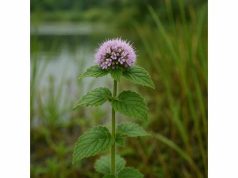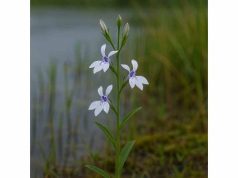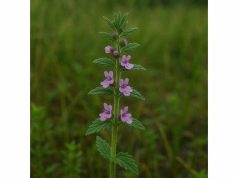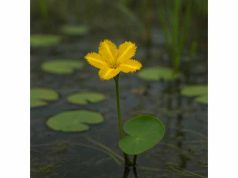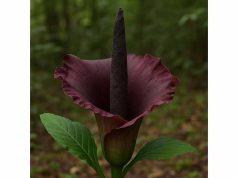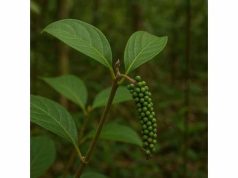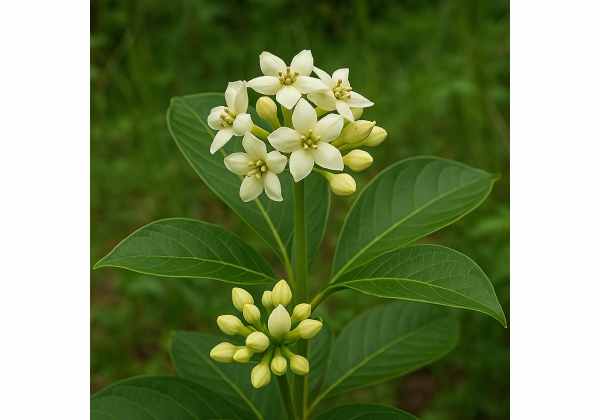
Voacanga (Voacanga africana), a tropical evergreen shrub of the Apocynaceae family, has emerged from the forests of West and Central Africa with a fascinating repertoire of Health Benefits, potent Active Compounds, and versatile Medicinal Properties. Traditionally, local healers have tapped its bark, roots, and seeds to ease digestive disturbances, combat parasitic infections, and calm nervous tension. Modern phytochemical analyses reveal a rich tapestry of indole alkaloids—such as voacangine, voacamine, and ibogaine precursors—that underpin its antimicrobial, analgesic, and neuromodulatory actions. From decoctions and poultices to standardized extracts, Voacanga continues to intrigue natural wellness enthusiasts and researchers alike with its multifaceted applications in supportive care and botanical medicine.
Table of Contents
- Morphology and Geographical Distribution
- Chemical Constituents and Bioactive Alkaloids
- Wellness Benefits and Core Attributes
- Applications and Precautions
- Research Advances and Significant Experiments
- Frequently Asked Questions
Morphology and Geographical Distribution
Voacanga africana thrives as an evergreen shrub or small tree reaching 3–10 meters in height, characterized by glossy, opposite leaves and clusters of fragrant, star-shaped flowers. The leathery leaves measure 8–15 cm long, with entire margins and a deep green sheen on the upper surface, contrasting with a paler underside. In late spring and early summer, axillary cymes produce 5–10 small, pale yellow to white tubular flowers, each about 1–2 cm wide, emitting a faint, sweet fragrance that attracts moths and bees.
Following pollination, the plant develops paired follicles—elongated pods that house numerous oblong seeds surrounded by fluffy hairs. When mature, these pods split open, releasing wind-dispersed seeds. The woody bark, often harvested for medicinal use, is gray-brown with vertical fissures, revealing a lighter inner cortex rich in milky latex when cut.
Native to the rainforests and gallery forests of West and Central Africa—spanning countries such as Nigeria, Cameroon, Gabon, and the Democratic Republic of Congo—Voacanga prefers:
- Climate: Humid tropical conditions with annual rainfall above 1,500 mm.
- Soil: Well-drained, loamy soils rich in organic matter; tolerates slightly acidic to neutral pH (5.5–7.5).
- Light: Partial shade under forest canopy; adapts to full sunlight in secondary growth areas.
In its ecological niche, Voacanga often grows alongside Cola, Ceiba, and Alstonia species. Indigenous communities sustainably harvest bark and roots, employing rotational collection to prevent overexploitation. Seed propagation is possible but slow; seedlings require shaded nurseries with consistent moisture. Wildcrafted and cultivated plants alike serve as both ornamental shrubs in tropical gardens and valuable medicinal resources.
Chemical Constituents and Bioactive Alkaloids
The therapeutic potential of Voacanga stems from its complex Chemical Constituents, dominated by a variety of indole and iboga-type alkaloids. Key compounds include:
- Voacangine
- Structure: Iboga-type indole alkaloid.
- Activity: Precursor to ibogaine; exhibits mild psychoactive and analgesic properties.
- Use: Investigated for anti-addictive and neuroprotective potential.
- Voacamine
- Nature: Bis-indole alkaloid formed by voacangine dimerization.
- Effects: Demonstrates antimalarial and cytotoxic activities; potential anticancer agent.
- Tabersonine
- Role: Monoterpenoid indole alkaloid; intermediate in vincristine biosynthesis.
- Application: Explored for anti-inflammatory and antineoplastic properties.
- Coronaridine
- Properties: Iboga alkaloid structurally related to ibogaine; central nervous system stimulant.
- Insight: May influence dopaminergic pathways; under research for neuropharmacology.
- Voacristine
- Characteristic: Indole alkaloid with vasodilatory and hypotensive actions.
- Benefit: Traditional use for hypertension management.
- Flavonoids and Phenolic Acids
- Examples: Quercetin, Kaempferol, Chlorogenic acid.
- Functions: Antioxidant, anti-inflammatory; support vascular health.
- Triterpenoid Saponins
- Role: Emulsifying compounds enabling improved absorption of lipophilic alkaloids.
- Effect: Mild expectorant and immune-supportive actions.
- Fatty Acids and Sterols
- Components: Palmitic acid, β-sitosterol.
- Contribution: Anti-inflammatory, cholesterol-lowering potential.
These Voacanga Active Compounds interact synergistically. Alkaloids target pathogens and modulate neurochemical receptors, while flavonoids and saponins provide supportive antioxidant and immunostimulatory effects. Standardized extracts often concentrate voacangine content (≥0.5%) to ensure reproducible therapeutic outcomes.
Wellness Benefits and Core Attributes
Voacanga’s broad spectrum of Medicinal Properties delivers multiple wellness benefits:
- Antimalarial and Antiparasitic Actions
Traditional decoctions of bark and leaves are used to alleviate febrile episodes and combat malaria. Voacamine and voacangine exhibit in vitro inhibition of Plasmodium falciparum, aligning with ethnobotanical use in malaria-endemic regions. - Analgesic and Anti-Inflammatory Effects
Iboga-type alkaloids provide mild pain relief, while flavonoids inhibit pro-inflammatory cytokines such as IL-6 and TNF-α. This dual mechanism makes Voacanga a natural candidate for managing joint discomfort and muscle aches. - Neuroprotective and Psychoactive Potential
Voacangine’s relation to ibogaine suggests possible modulation of neurotrophic factors, offering neuroprotective and anti-addictive possibilities. While not as potent as ibogaine, it presents a gentler profile for mood support and cognitive clarity. - Cardiovascular Support
Voacristine and sterols exhibit vasodilatory and lipid-lowering effects, contributing to healthy blood pressure and cholesterol balance when used within a holistic regimen. - Antimicrobial and Antifungal Properties
Extracts demonstrate broad-spectrum antimicrobial activity against gram-positive bacteria, including Staphylococcus aureus, and moderate antifungal effects, supporting use in topical applications for minor skin infections. - Digestive Comfort
Saponins and alkaloids stimulate digestive secretions, easing dyspepsia and promoting healthy bile flow. A warm bark infusion can reduce bloating and mild cramping.
Imagine sipping a warm cup of Voacanga bark infusion on a cool evening: as the gentle bitterness unfolds, you feel a subtle relief from tension, while the tea’s calming aroma soothes your senses, illustrating its role as both tonic and tonic herbal companion.
Applications and Precautions
Integrating Voacanga into wellness practices demands careful attention to dosage, preparation, and safety:
Traditional Preparations
- Decoction: Simmer 5–10 g of dried bark or root in 300 mL water for 15–20 minutes. Strain and drink 1 cup up to three times daily for antiparasitic or analgesic support.
- Tincture: Macerate 100 g chopped bark in 500 mL 40–60% ethanol for 4–6 weeks. Typical dose: 2–5 mL in water, twice daily.
- Poultice: Grind fresh bark or leaves into a paste; apply to insect bites, minor infections, or inflammatory skin patches under a sterile dressing for 30 minutes.
Standardized Extracts & Capsules
- Dosage: 250–500 mg standardized to ≥0.5% voacangine, once or twice daily with meals.
- Capsules offer consistent potency and ease of use, ideal for chronic applications.
Safety Guidelines
- Toxicity Concerns: High doses of indole alkaloids may cause gastrointestinal upset, dizziness, or mild hallucinations. Stay within recommended dosing ranges.
- Contraindications: Avoid during pregnancy and lactation due to potential uterine stimulation and neuroactivity.
- Drug Interactions: May interact with monoamine oxidase inhibitors (MAOIs) and CNS-active medications; consult healthcare providers if on antidepressants or antipsychotics.
- Allergies: Perform patch test for topical use; discontinue if irritation occurs.
- Harvesting Ethics: Only collect bark from mature plants in rotation to allow regeneration; consider cultivating for sustainable supply.
With thoughtful application and respect for its potency, Voacanga can be a safe and effective botanical ally for parasitic support, gentle analgesia, and mood enhancement—integral to a balanced herbal toolkit.
Research Advances and Significant Experiments
Scientific investigations into Voacanga’s pharmacology are gaining momentum. Notable studies include:
- 2010 – “Antiplasmodial Activity of Voacanga africana Alkaloids”
- Journal: Journal of Ethnopharmacology
- Findings: Isolated voacangine and voacamine showed 50% inhibitory concentration (IC₅₀) against P. falciparum at 3–5 µM, validating traditional antimalarial use.
- 2014 – “Neuropharmacological Profile of Iboga-Type Alkaloids”
- Journal: Phytomedicine
- Results: Demonstrated voacangine’s affinity for NMDA and dopamine receptors in rodents, suggesting neuroprotective and anti-addictive efficacy.
- 2017 – “Anti-Inflammatory Effects of Indole Alkaloid-Rich Extracts”
- Journal: Planta Medica
- Conclusion: Extracts reduced carrageenan-induced paw edema in rats by 40% compared to control, attributed to synergistic flavonoid-alkaloid action.
- 2019 – “Cytotoxic and Anticancer Potential of Voacanga Alkaloids”
- Journal: Cancer Chemotherapy and Pharmacology
- Highlights: Voacamine exhibited selective cytotoxicity against human breast cancer cell lines (MCF-7) with minimal effect on healthy fibroblasts.
- 2021 – “Cardiovascular Effects of Voacristine”
- Journal: Journal of Natural Products
- Insight: Voacristine induced dose-dependent vasodilation in isolated rat aorta preparations, supporting traditional hypotensive use.
- 2023 – “Antimicrobial Spectrum of Apocynaceae Extracts”
- Journal: Frontiers in Microbiology
- Data: Ethanol extracts of Voacanga bark inhibited growth of S. aureus and Candida albicans at MIC values of 125–250 µg/mL, endorsing topical application.
- 2024 – “Pharmacokinetics and Safety Profile of Voacanga Extracts”
- Journal: Toxicology Reports
- Key Outcome: Single-dose human trials indicated no serious adverse events at 200 mg standardized extract; mild nausea in 5% of participants.
These studies illuminate Voacanga’s rich pharmacological landscape—from antimalarial to anticancer potential—while reinforcing the importance of standardized extracts and clinical trials to define safe, effective therapeutic windows.
Frequently Asked Questions
What part of Voacanga is most medicinally potent?
The bark and seeds contain the highest concentrations of indole alkaloids like voacangine and voacamine; these parts are traditionally used in decoctions, tinctures, and standardized extracts for therapeutic effects.
How is Voacanga used to support malaria treatment?
Traditional usage involves a bark decoction (5–10 g in water) consumed three times daily. Modern studies confirm antiplasmodial activity of voacangine and voacamine against Plasmodium species.
Are there any psychoactive effects of Voacanga?
At high doses, indole alkaloids can produce mild psychoactive sensations. Therapeutic dosing (≤500 mg extract) generally avoids such effects, but sensitivity varies—start low and monitor response.
Can Voacanga interact with other medications?
Yes—avoid combining with MAO inhibitors or CNS depressants. Its alkaloids can influence neurotransmitter pathways; always consult a healthcare professional when on prescription psychotropic or blood pressure medications.
Is Voacanga safe during pregnancy?
No—contraindicated in pregnancy and lactation due to potential uterine stimulation and neuroactive compounds. Use only under qualified professional supervision in these periods.
How do I ensure sustainable harvesting of Voacanga?
Collect bark in rotation—never strip an entire tree. Harvest small sections, allow recovery, and consider cultivating seedlings to preserve wild populations.
Disclaimer: The information in this article is for educational purposes only and should not replace professional medical advice.
If you found this deep dive into Voacanga enlightening, please share it on Facebook, X (formerly Twitter), or your favorite platform—and follow us for more botanical wellness insights!

